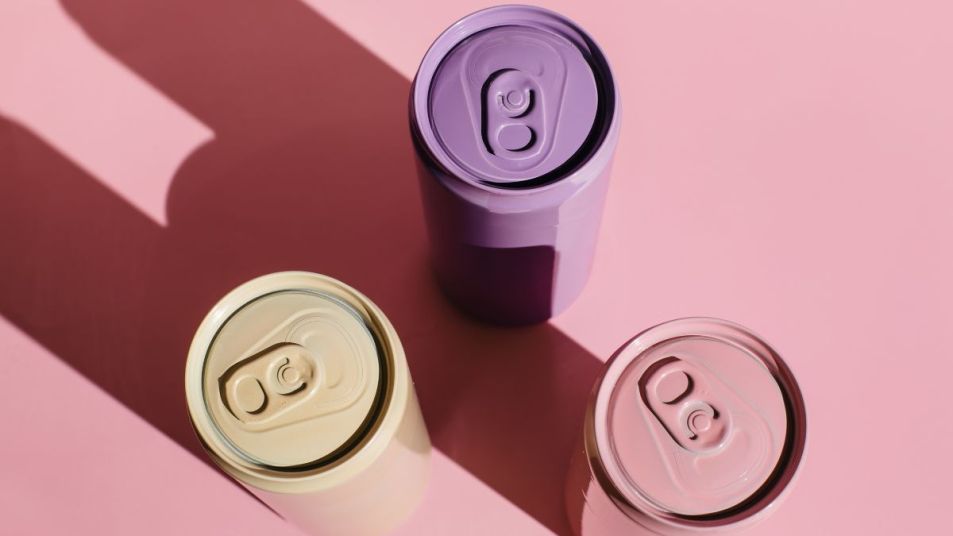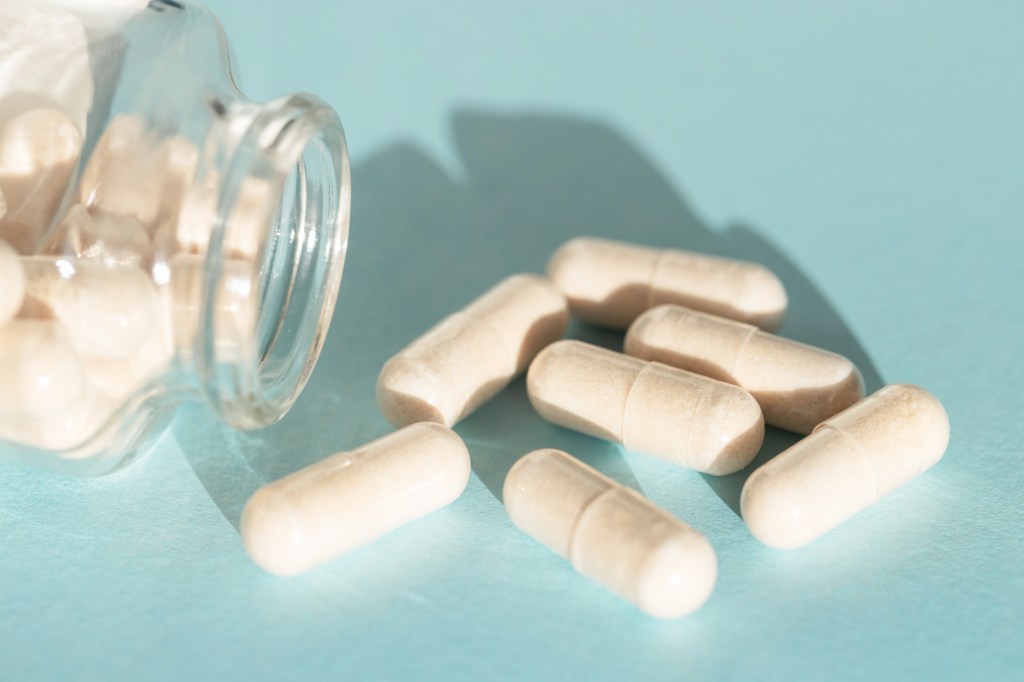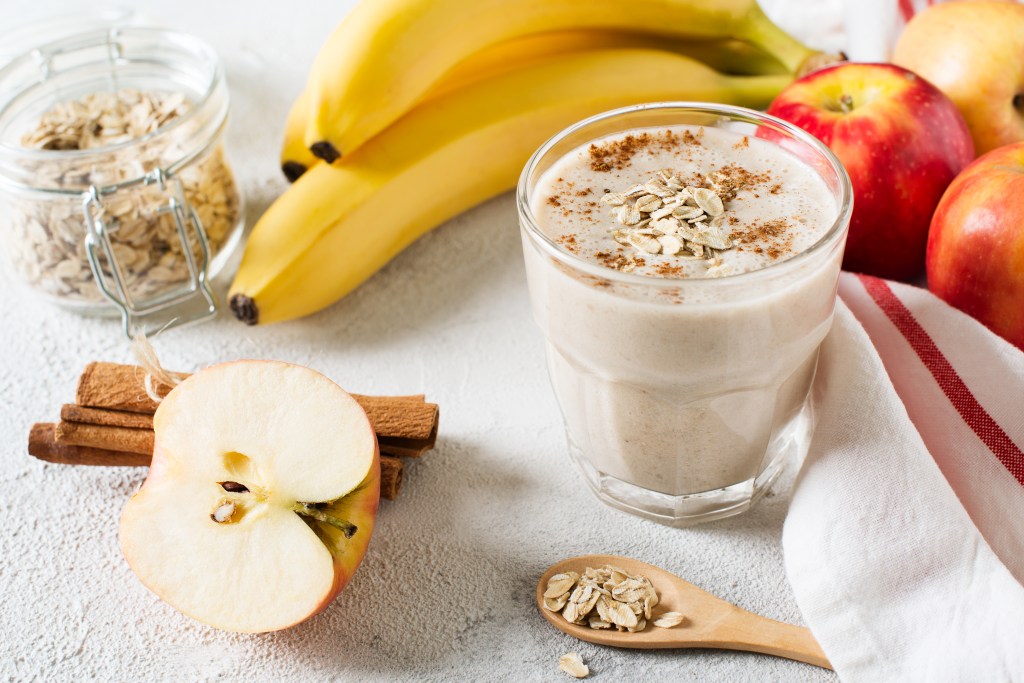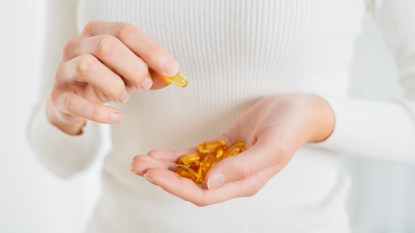Are Prebiotic Sodas Good for You? Top Doctors Weigh In
Need-to-know info about the trendy low-calorie, low-sugar, fiber-rich sips

Walk down the beverage aisle at any grocery store and you’ll probably notice a bunch of colorful beverages with bold health claims. Probiotic drinks like kombucha and tepache have long dominated the space, but now there’s a new drink in town: prebiotic sodas. Brands such as Poppi and OLIPOP are quickly making waves on store shelves and across TV screens and social media. But these soft drinks are selling more than just trendy packaging and unique flavors: They claim to be a healthier alternative to traditional sodas like Coke and Sprite. Do these claims hold water? And if so, are prebiotic sodas good for you? We connected with several gut health experts to learn more.
How prebiotics and probiotics support gut health

To appreciate the potential health benefits of prebiotic soda, you first need to understand how the gut functions.
“The gastrointestinal (GI) tract is full of bacteria, fungi and viruses that work with your body and help regulate bodily function,” explains Brisas Marie Flores Truncali, MD, a double board-certified gastroenterologist at Connecticut GI. “This is collectively referred to as the ‘gut microbiome.'” Both probiotics and prebiotics are thought to support a healthy gut, but they do it in different ways.
Probiotics boost ‘good’ gut bugs
Probiotics are living microorganisms. They’re added to various foods, beverages and nutritional supplements to increase the “good” bacteria responsible for regulating healthy digestion.
Related: Do Probiotics Help With Bloating? Docs Say Yes — If You Choose the Right Ones
Prebiotics feed the microbiome
Prebiotics are plants, like fruits and vegetables, which bacteria in your stomach consume for energy. Specifically, “prebiotic refers to something that promotes growth and regulation of the microbiome,” Dr. Truncali says. “They’re basically food for your gut.”
Why getting a good mix of both is key for health
Ensuring you consume the right balance of prebiotics and probiotics has significant health implications. “We now understand that gut health affects mental health, immunity, weight gain, sleep and certain types of diseases,” says Janese Laster, MD, a board-certified expert in nutrition and obesity medicine with Medstar Georgetown University Hospital and the founder of Gut Theory Total Digestive Care.
Related: Top MDs Reveal the 10 Best Foods to Eat For Gut Health
Kaytee Hadley, MS, RDN, IFMCP, CPT, who’s known as “The Anti-IBS Dietitian,” offers a fun analogy: “Think of your gut bacteria as Pac-Man and prebiotics as the colorful Pac-Dots that he eats. When Pac-Man eats Pac-Dots, he gets a bonus prize! In the same way, our gut bacteria love to ferment and eat prebiotics. This process gives us our own version of a bonus prize called ‘short chain fatty acids,’ which provide important benefits for the gut lining and microbiome.”
Are prebiotic sodas good for you?
Considering the above benefits, you might assume that prebiotic sodas are, in fact, good for you. But the real answer is a little more complicated. Dr. Truncali says prebiotic sodas are “much lower in sugar and calories, and may contain a certain notable degree of fiber,” but there’s currently no way to measure their impact. That’s why “some people will say, ‘oh this worked for me,’ while others will say ‘that did nothing for me,’” says Dr. Laster.
Are prebiotic sodas healthier than traditional sodas?
Yes, says registered licensed dietitian nutritionist and former Director of Nutrition at Pritkin Longevity Center & Spa, Kimberly Gomer, MS, RD, LDN. “There are several reasons replacing normal soda with a prebiotic choice can result in great outcomes,” she says. “They can help you absorb calcium, change the rate at which foods cause spikes in blood sugar, prevent constipation and keep the cells that line your gut healthy.”
Related: Is Yogurt Good for Constipation? Yes — And So Are These 9 Other Foods
Emily Spurlock, RDN, a registered dietitian with the Institute for Digestive Wellbeing echoes these sentiments, emphasizing that prebiotic sodas are far less sugary. “A regular can of Coke has 39 grams of sugar — that’s almost 10 teaspoons!” she emphasizes. “Prebiotic sodas have five grams of sugar or less and contain beneficial fiber.” That means they’re much less likely to cause those highs and lows like so many other sodas do.
Comparing prebiotic sodas: OLIPOP vs Poppi
Gomer says there are two main players on the prebiotic soda scene: OLIPOP and Poppi. Though similar, there are differences between the brands.
Poppi
“Poppi uses apple cider vinegar, which is a prebiotic known as pectin. There’s no definitive research on apple cider vinegar helping gut health,” Gomer explains. “But, we have a less sugar-sweetened soda that may help with blood sugar levels, prevent heartburn and provide antioxidants.” (Buy on Amazon, $26.99 for a 12-pack.)
OLIPOP
OLIPOP uses several prebiotics, “including cassava root, chicory root, Jerusalem artichoke, nopal cactus, calendula flower and kudzu root,” Gomer says. “These ingredients add fiber and inulin, which can help with constipation and stabilize blood sugar.” (Buy on Amazon, $35.99 for a 12-pack.)
Related: Chicory Root Could Kick-Start Weight Loss, Studies Show
Which prebiotic soda is better?
The best prebiotic soda for you depends on personal preference, but Hadley says one in particular contains significantly more fiber.
“When you compare the nutrition labels for OLIPOP and Poppi, you’ll notice that the sugar content is comparable – under five grams per can for both,” Hadley says. “The biggest difference is fiber content, which is arguably the most important factor because fiber equals gut-friendly prebiotics. Poppi has only two grams of fiber per can compared to OLIPOP’s whopping nine grams!”
Hadley adds that OLIPOP is the only NutraStrong Prebiotic verified functional soda. This distinction, awarded by contract research organization, NutraSource, establishes relevant and specific standards for food and drinks that make health-related claims. In less scientific terms: it confirms that products have been scientifically tested and manufactured according to industry standards.
The prebiotic soda craze is all over TikTok, with many reviewers posting comparison videos like this one:
How much prebiotic soda is safe to drink?
Even though prebiotic sodas contain less junk than traditional soda, the experts we spoke with say moderation is key. “If you’re trying to wean off soda, this is a great sort of stepping stone,” Dr. Laster says. “But in general, I always tell my patients that these drinks aren’t something to consume throughout the day, because they’re still a carbonated beverage with sugar. In the GI world, carbonation often causes bloating, heartburn and all sorts of other things. So, it shouldn’t be your only method of hydration.” They’re also on the pricey side, at $2.25 to $3 a can.
“I’d recommend people stick to one can a day,” adds Spurlock. “There’s no reason to drink more than that. It’s not going to hurt you to drink more, but it can be a lot of fiber at once.” And while fiber does support digestive health, eating — or in this case, drinking — too much of it increases the risk of gastrointestinal problems, including stomach cramps, gas and diarrhea.
Who should avoid prebiotic sodas?
Drinking prebiotic sodas every once in a while isn’t going to hurt you, but if you have a sensitive stomach, Hadley recommends checking with your doctor or a registered dietitian first. This is especially true if you have:
- Irritable bowel syndrome (IBS)
- Small intestine bacterial overgrowth (SIBO)
- Gastroesophageal reflux disease (GERD or acid reflux)
- Crohn’s disease
- Colitis
You might also want to avoid these drinks if you prone to feeling gassy or bloated, as they can make these symptoms worse.
Other ways to get your daily dose of prebiotics

Prebiotic sodas can be a fun (and tasty) way to mix up your beverage consumption, but they aren’t a substitute for eating a balanced, nutritious diet.
“There’s no question that prebiotics are important for gut health, but the question is if it is a good idea to get them from soda,” says Gomer. “Understand that prebiotics are found in many fruits, vegetables and whole grains.” These include:
- Apples
- Artichokes
- Asparagus
- Bananas
- Barley
- Cherries
- Dandelion greens
- Garlic
- Onions
- Oats
- Tomatoes
- Soybeans
It’s best to consume healthy snacks and meals that feature some of these ingredients. If your diet mostly consists of processed foods that contain salt, sugar and saturated fat, Spurlock says you probably “won’t experience any health benefits by [simply] adding in prebiotic soda.”
Still, prebiotic sodas may provide an alternative to less nutritional drink options and can even encourage folks to seek out improved health and hydration. “Getting people to just drink water is really hard,” Dr. Laster says. “I think [prebiotic sodas] are a lot of hype, but they’re a step in the right direction, especially if they help people wean off traditional sodas and sugary juices.”
For more gut-health insights, click through these stories:
We’ve Been Eating Chia Seeds Wrong — Study Says Grinding Them Boosts Gut Health Benefits
Top MDs Reveal the 10 Best Foods to Eat For Gut Health
This content is not a substitute for professional medical advice or diagnosis. Always consult your physician before pursuing any treatment plan.













